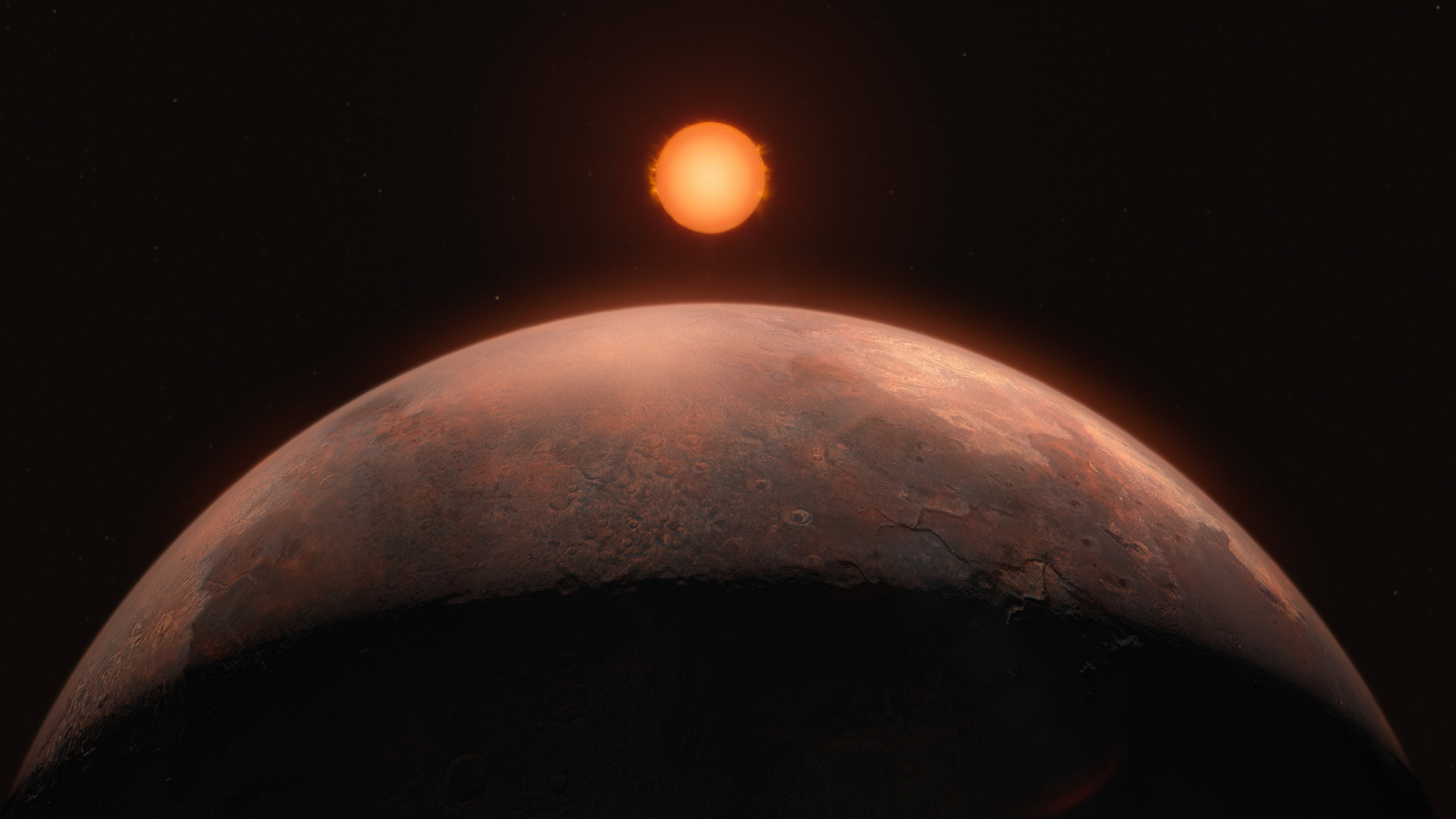In a new paper in the journal Nature Ecology & Evolution, paleontologists described the diversity of the Cabrières Biota, a new Early Ordovician site from Montagne Noire, southern France. During the Early Ordovician, the area was an open marine environment located in the southern hemisphere at high polar latitudes on the margin of the supercontinent Gondwana.
An artistic reconstruction of the Cabrières Biota: in the foreground, a row of Ampyx (trilobites) and various shelly organisms, including brachiopods and a hyolith (bottom left corner); behind the trilobites, a lobopodian, a chelicerate, cnidarians (blue), sponges (green), thin branching algae (red and green) and hemichordate tubes (purple), along with some mollusks; bivalved arthropods inhabit the water column along with graptolites. Image credit: Christian McCall, Prehistorica Art.
“Early Paleozoic sites with soft-tissue preservation provide a wealth of information on the evolution of past life and enhance our understanding of previous ecosystems, but are unequally distributed in time and space,” said University of Lausanne paleontologist Farid Saleh and his colleagues.
“While approximately 100 assemblages with soft-tissue preservation have been described from the Cambrian, around 30 are known from the Ordovician period, and only a few sites are discovered in Early Ordovician rocks.”
“The distribution of Early Paleozoic sites is also paleogeographically skewed, as approximately 97% of discovered biotas represent tropical and temperate ecosystems within 65° north and south of the paleoequator.”
“This pattern is particularly true for the Ordovician, where very few sites are known from polar environments.”
“Among the most famous Ordovician sites, the Soom Shale in South Africa, Big Hill and Winneshiek in the United States are indicative of tropical ecosystems.”
“Considering the rarity of Ordovician sites and their skewed paleogeographic distribution, the discovery of new biotas with soft-tissue preservation beyond the aforementioned paleogeographic zones and environments is crucial for expanding our understanding of this time period and gaining better insights into the factors driving the rise of animal diversity on Earth.”
Biomineralized species of the Cabrières Biota: (a) trilobite of the genus Ampyx; (b) gastropods associated with a tube-like structure, probably the conulariid Sphenothallus; (c) biomineralized conulariid cnidarian; (d) articulated brachiopods attached to a possible leptomitid sponge; (e) assemblage formed of articulated brachiopods (center), flattened carapaces probably of bivalved arthropods (center left and right) and a calymenine trilobite cranidium (left); (f) a hyolith with possible internal organs. Scale bars – 4 mm in (a) and (e), 1 cm in (b) and (d), 5 mm in (c), and 2 mm in (f). Image credit: Saleh et al., doi: 10.1038/s41559-024-02331-w.
In their new paper, the paleontologists described a 470-million-year-old (Early Ordovician) fossil assemblage, named the Cabrières Biota, from southern Montagne Noire, France.
The fossil site was discovered by two French amateurs, Eric Monceret and Sylvie Monceret-Goujon.
Dr. Saleh and co-authors examined nearly 400 exceptionally well-preserved fossils with soft-tissue preservation from the site.
The fossils commonly exhibit brown, red or orange hues and are embedded within a siliciclastic matrix composed of mudstone and siltstone, which can range in color from blue to green and yellow.
The Cabrières Biota is characterized by a prevalence of sponges and branching algae constituting 26% of all identified fossils.
It also includes mollusks (14%), trilobites (12%), brachiopods (9%), hyoliths (7%) and cnidarians (6%).
An interesting feature of the biota is the rarity of echinoderms, which are represented by three specimens only.
The Cabrières Biota also showcases a variety of bivalved arthropod carapaces forming 16% of identified fossils.
Some vermiform organisms are also present in the biota (around 1% of identified fossils).
“The Cabrières Biota was once located very close to the South Pole, revealing the composition of Ordovician southernmost ecosystems,” Dr. Saleh said.
“The site’s high biodiversity suggests that this area served as a refuge for species that had escaped the high temperatures prevailing further north at the time.”
“At this time of intense global warming, animals were indeed living in high latitude refugia, escaping extreme equatorial temperatures.”
“The distant past gives us a glimpse of our possible near future,” said Dr. Jonathan Antcliffe, a paleontologist at the University of Lausanne.
_____
F. Saleh et al. The Cabrières Biota (France) provides insights into Ordovician polar ecosystems. Nat Ecol Evol, published online February 9, 2024; doi: 10.1038/s41559-024-02331-w
Note: This article have been indexed to our site. We do not claim legitimacy, ownership or copyright of any of the content above. To see the article at original source Click Here














